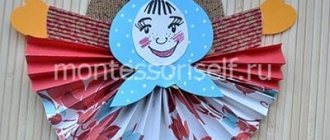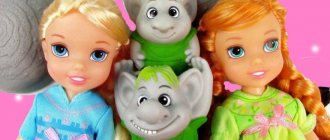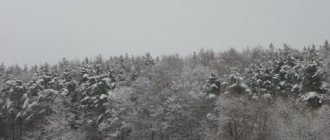Card index of experiments “Snow and Ice”
Target:
Development of creative and cognitive activity of preschool children in the process
research activities.
Tasks:
- Teach children to acquire new information through experimentation.
- To develop children’s ability to observe, draw conclusions and inferences, and then
based on accumulated experience, implement them in independent creative
activities.
- Enrich children's vocabulary.
- Develop cognitive processes (memory, attention, imagination, horizons).
- Develop fine motor skills while implementing creative ideas.
- Develop children’s work and independent skills, sense of teamwork and
responsibility for the work performed.
- Foster activity and a desire to participate in research activities.
- Cultivate an interest in the world around you and a desire to learn something new.
- Cultivate curiosity, love of nature and respect for your health.
Task:
clarify ideas about snow and ice.
Contents of the experience:
Prepare 2 glasses. In one - put snow,
in the other - ice. Find out what color the snow is? Ice?
If children name: white, blue, gray, then show them these colors and compare them with ice.
Result:
The color of snow and ice was determined and compared.
Conclusion:
Snow is white, ice is transparent.
Task:
bring children to the concept of “transparent”.
Contents of the experience:
Prepare a piece of ice and a lump of snow. Place a colored picture under a piece of ice and under a lump of snow. Place a colored picture under a piece of ice and under a lump of snow. Compare where the picture is visible and where it is not. Result:
Under the ice the color picture is visible, but under the snow – not.
Conclusion:
Ice is transparent, and snow is opaque.
Task:
lead children to understand the connection between air temperature and water condition.
Contents of the experience:
Pour clear water into the molds. Add gouache to them. Each mold contains a different gouache. Mix. Take the molds with colored water out into the cold.
Result:
You get beautiful colored pieces of ice (slippery, cold, hard.) Warm the mold in your hands so that the piece of ice pops out more easily.
Conclusion:
Water turns into ice at low temperatures.
Task:
bring children to the understanding that snow melts from any heat source.
Contents of the experience:
Bring snow indoors in a bucket. Watch it melt. Take a little snow on your palm. Also observe the melting process.
Result:
Over time, the snow melts and turns into water.
Conclusion:
From any source of heat, snow melts and turns into water.
Task:
bring children to the understanding that the icicle melts from any heat source (warm room, bright rays of the sun, palm.)
Contents of the experience:
Bring the icicle into a warm room. Place on a tray or palm. Watch her melt.
Result:
Over time, the icicle melts more and more, turning into water.
Conclusion:
The icicle melts from any heat source, gradually turning into water.
Task:
lead children to understand the dependence of the properties of snow on air temperature.
Contents of the experience:
Invite children to make snowballs on a frosty day.
Result:
The snow crumbles easily and sculpting fails.
Conclusion:
In frosty weather, nothing can be molded from snow, because it is light, fluffy, dry, and crumbly.
Task:
clarify the properties of wet snow.
Contents of the experience:
During the thaw, invite children to make snowballs out of snow.
Result:
The snow is molded, beautiful round snowballs are obtained.
Conclusion:
The snow is sticky, heavy, wet, damp.
Task:
determine the properties of snow and ice.
Contents of the experience:
Take a handful of snow and pour it out. What can we call this property of snow? It is advisable to accidentally drop an icicle on a hard surface or knock on it. What happened to her?
Result:
The snow crumbled and the ice cracked.
Conclusion:
The snow is loose and loose. Ice is fragile.
Internet resource used: https://vostochnsad.ucoz.ru/index/0-25
Ice in boiling water
So let's get started. The first of our experiments involves fire, water, and ice. More precisely, we will try to combine ice and boiling water. The simple equipment that we need for this consists of a test tube, an alcohol burner, a weight, as well as cold water and several pieces of ice. In general, experiments with ice in the older group (or preparatory group - it’s still difficult for kids to understand them) do not require a large number of complex tools and devices.
What does the child know at the start of the experiment? Preschoolers usually already know that ice tends to melt quickly in hot (not to mention boiling) water. Let's try to find out (this will be the goal of our experiment) whether this is possible: water boils, but ice remains solid.
How the experiment is carried out: take a test tube and fill it with water, then throw a piece of ice into it. And since it is lighter than water and tends to float, we press it down from above with a copper weight, but at the same time the pieces of ice should be surrounded by water on all sides.
How Santa Claus paints our windows
Experiment number 8. Everyone saw frosty patterns on the window glass. Let's try to reproduce them in “laboratory” conditions. Instead of window glass, let's take a piece of plastic or a dry glass plate that will replace the window. You will also need a cup of hot water and a brush of varying thickness. The weather on the day of the experiment should be quite frosty.
When taking your children out for a walk, warn them that they are about to transform into Santa Claus. If the children are already old enough, you can discuss the plot of the future drawing in advance, and even create a sketch on paper.
When you go outside, carefully apply the pattern with hot water to the dry, pre-wiped surface of the glass using a brush. You need to work quickly before the water hardens. You should not repeat the brush over the same place, but after the picture freezes, you can repeat the procedure and make all the lines thicker and more noticeable.
There are undoubtedly other experiments with ice. You can come up with some things yourself. The main thing is to awaken and maintain children’s interest in such unusual and diverse natural phenomena!
We get clean ice
Experiment number 6. Stock up on water (regular, salty and sweet). Start by telling the children that although they know ocean water is salty, the ice on the surface of the Arctic Ocean is fresh. During the experiment, together with the children, we will find out how freezing water occurs from impurities in the form of sugar and salt.
To conduct the experiment, prepare several ice cubes in advance. Carefully split each of them in half, obtained from sweet, salty, as well as the most common fresh water. Ask the children - do they think that if we freeze sweet or salty water, we will get the same ice?
Most likely, the answer will be yes. But this is wrong - in fact, the water that crystallizes during the formation of ice gets rid of foreign molecules and impurities. To confirm your words, allow the children to lick the ice pieces and make sure you are right.




